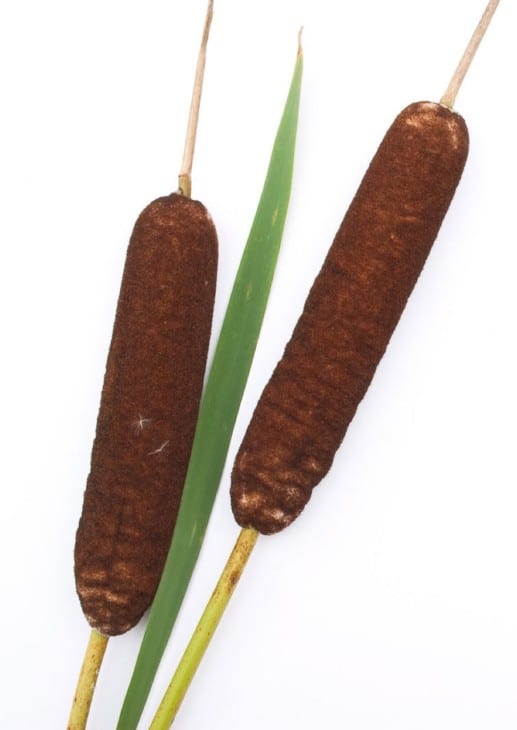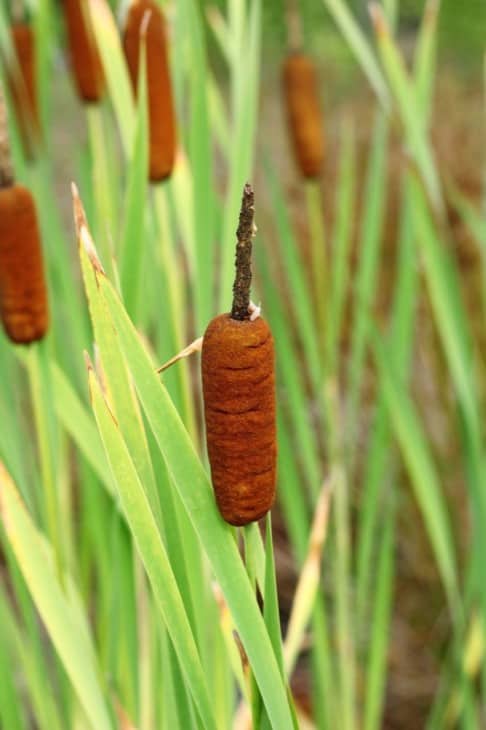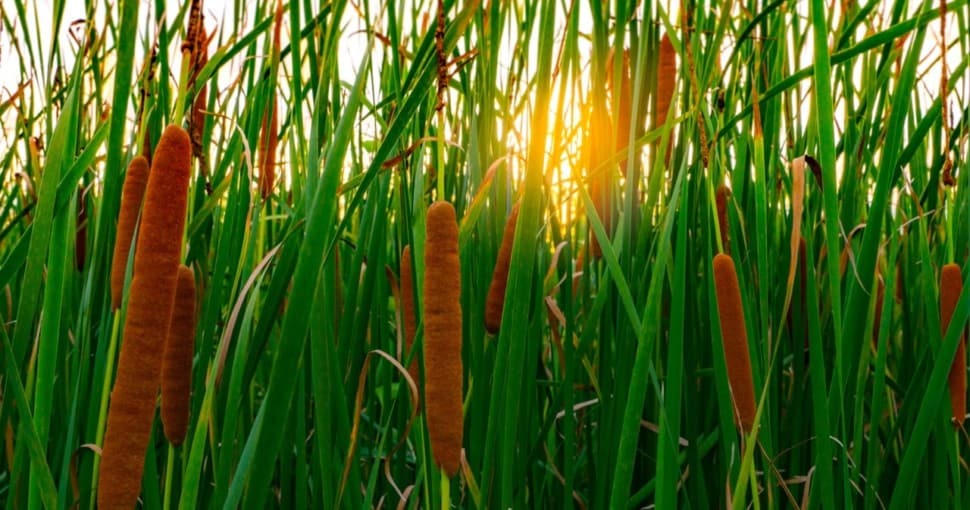Cattails are generally a wild plant that is found around water sources in the United States. This plant can sometimes be kept in gardens if there is enough space, but as it is wild, many pet owners and parents are worried about its possible health risks. So, are Cattails poisonous?
Contents
Cattails are non-toxic to humans, cats, dogs, and certain livestock animals. This plant is part of the top 20 edible wild plants of Northern America. However, if you own horses, you need to be wary of this plant as Cattails are mildly toxic to horses, but any other animal should be fine.
Are Cattails Poisonous To Humans?
Cattails are unique-looking plants that generally grow in the wild, but some people keep this plant in their gardens. You will most likely never find Cattails planted in pots, as these plants need a large growing area to thrive.
In the late summer or early fall, you will notice these plants swaying in the breeze with their fuzzy brown Cattails sticking out.
These plants are known to grow in wetlands all around the United States and Canada. With Cattails, where there is any water source, you will be extremely likely to see them growing.
With Cattails as widespread as they are, you may be worried about the health of your family and your children as we are all being exposed to this plant more frequently. This does mean that there is an increasing chance of the plant being ingested accidentally, especially by small children.

So, do you need to be worried about your family’s health and safety regarding the Cattail plants?
Cattails, also known as Typha latifolia, are non-toxic to humans. In fact, this plant is one of the most versatile plants that you can find growing in the wild. Cattails are among the top 20 edible wild plants in the Northern United States.
Most parts of the Cattail plants are edible; you can eat the roots, the Cattail flowers before they go to seed, and the stalks and shoots. So, if your child or family member eats a piece of a Cattail plant, you have nothing to worry about.
Are Cattails Poisonous To Dogs?
If a large number of Cattails begin to grow around your home, this can also be troubling for dog owners. Cattails are also very common plants to find in parks with a water source, but these plants are rarely planted there on purpose.
Cattails are fast-growing plants that can be found almost anywhere can be worrying to many dog owners as many plants in the world can be toxic to dogs, with some of these poisonous plants even being deadly to dogs if they are ingested.
This can make your concerns for your dog’s health grow every time you take your dog to the park or any area where these plants are growing as they could be harmful to your dog. So, should you be nervous about your dog being around Cattails?
Cattails are non-toxic to dogs, so if you see your dog nibbling on a Cattail plant at the park, you do not need to worry if your dog ingests the plant. If your dog eats the plant, the only possible side effect could be some gastrointestinal discomfort.
You need to be concerned with your dogs playing with Cattail plants when the plants have seeded, as these seeds can irritate your dogs’ noses and get stuck in your dogs’ paws, which can be painful.
Are Cattails Poisonous To Cats?
Cattails are common plants and are springing up around water sources everywhere, especially in parks, which can be problematic for cat owners just as it is for dog owners.
However, this could be more worrisome for cat owners, as they have little control over what their cats do and where they go while traveling outside their homes.
The number of these Cattail plants popping up around your neighborhood can be troubling, as many plants in the world are toxic to cats. So, are your concerns for your cat around cattails valid, or can your mind be calm about this situation?
Cattails are non-toxic to cats, so if you see your dog nibbling on or interacting with a Cattail plant at the park, you do not need to worry if your cat ingests this plant. If your cat eats the plant, the only possible side effect could be some gastrointestinal discomfort or a slight bit of skin irritation due to the interaction.
You need to be concerned with your cat interacting with Cattail plants when the plants have seeded, as these seeds can irritate your cats’ noses and get stuck in their paws, which can be quite painful for them.

Are Cattails Poisonous To Livestock?
Cat and dog owners in urban and surrounding areas are not the only animal owners apprehensive about the increasing number of Cattails that are naturally sprouting up everywhere near their water sources.
People who own livestock, including chickens, cows, sheep, and goats, are just as worried for the health and safety of their livestock animals when it comes to this growing number of Cattail plants.
But even livestock owners can rest easy as these water plants seem to be non-toxic to most animals that have come across the plant’s path and have tried to eat it. However, you should still try and stop your animals from eating this plant, as consuming too much of it can cause some gastrointestinal distress for the animal.
If you own horses, then you need to be wary of this plant, as Cattails are mildly toxic to horses, but any other animal should be fine if they consume Cattail plants.
Are There Any Considerations Before You Eat Cattails?
Before you go and try to pick some Cattails and eat them or give them to your animals to play with, there are a few considerations you need to be aware of. You should make sure that you have identified the plant correctly as there is a look-alike plant to the Cattail.
This look-alike plant is the Iris plant, which is toxic to both humans and animals. This plant is extremely similar in appearance to the Cattail plant, so be sure to look for the tell-tale Cattail heads that look like cigars to ensure you have the correct plant.
Before you consume any part of the Cattail plant, you should wash it thoroughly as this plant is a wild plant and can have bugs and droppings from animals on them, which you do not want to eat.







